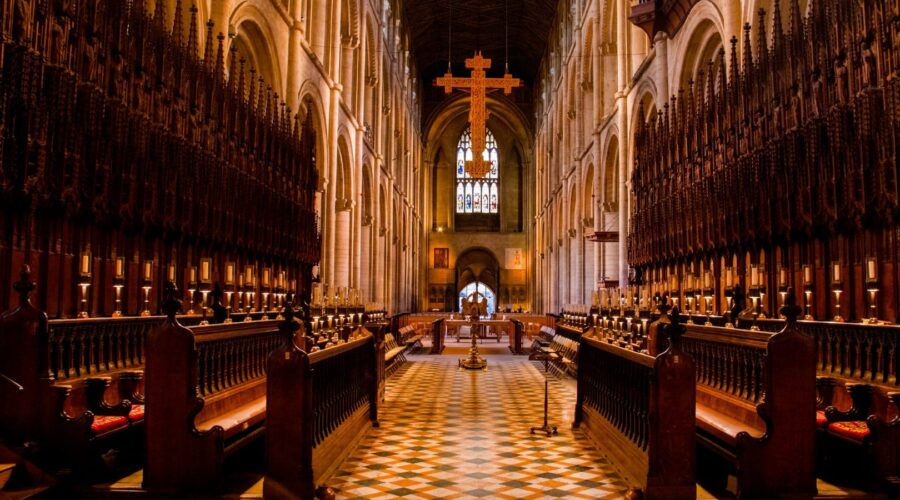Your cart is currently empty!
Unveiling the Hierarchy of the Catholic Church: A Comprehensive Guide

Introduction
The Catholic Church, a global institution with a rich history and vast influence, is governed by a well-defined hierarchy that plays a crucial role in its organization and administration. This hierarchy reflects the Church’s belief in the apostolic succession, tracing its origins to the apostles chosen by Jesus Christ. Understanding the structure and functions of the Catholic Church hierarchy is essential for comprehending the Church’s governance, decision-making, and spiritual leadership.
Papacy: The Supreme Authority
The Pope: A Successor of St. Peter
The pinnacle of the Catholic Church hierarchy is the Pope, who serves as the Bishop of Rome and is regarded as the successor of St. Peter, the apostle upon whom Jesus declared he would build his Church (Matthew 16:18). The Pope holds supreme authority in matters of faith, morals, and Church governance.
Election of the Pope
When the reigning Pope passes away or resigns, a conclave of Cardinals, known as the College of Cardinals, gathers in the Sistine Chapel to elect a new Pope by secret ballot. The elected Pope must receive a two-thirds majority vote and must be a male Catholic Bishop.
Functions of the Pope
- Presiding over the Universal Church
- Defining and safeguarding Catholic doctrine
- Leading the Church’s missionary and evangelizing efforts
- Canonizing saints and beatifying candidates for sainthood
- Appointing bishops, archbishops, and other high-ranking clergy
Bishops: Shepherds of the Dioceses
Bishops are ordained ministers responsible for leading and overseeing individual dioceses, which are geographic territories within the Catholic Church. They are appointed by the Pope and possess apostolic authority, meaning they trace their lineage back to the apostles.
Functions of Bishops
- Governing their dioceses
- Teaching and interpreting Catholic doctrine
- Ordaining priests and deacons
- Consecrating churches and other sacred spaces
- Providing pastoral care to the faithful
Priests: Ministers of the Sacraments
Priests are ordained ministers who assist bishops in the administration of the sacraments, the rites and rituals of the Church. They are ordained through the sacrament of Holy Orders, which grants them the ability to celebrate Mass, forgive sins, and administer other sacraments.
Functions of Priests
- Leading worship and celebrating Mass
- Preaching the Gospel and teaching the faith
- Administering the sacraments
- Providing spiritual guidance and counseling
- Visiting the sick and offering comfort to the dying
Deacons: Servants of the Church
Deacons are ordained ministers who serve the Church in various capacities. They assist priests and bishops in liturgical ceremonies, proclaim the Gospel, and perform works of charity and service.
Functions of Deacons
- Assisting at Mass and other liturgical celebrations
- Proclaiming the Gospel and preaching
- Distributing Holy Communion
- Baptizing and marrying
- Providing assistance in charitable and social ministries
Lay Ministry: Participation of the Faithful
In addition to ordained clergy, the Catholic Church recognizes the importance of lay ministry, allowing baptized Catholics to participate actively in the life and mission of the Church. Lay ministers serve in various roles, such as:
- Catechists
- Lectors
- Acolytes
- Eucharistic ministers
- Pastoral assistants
The Importance of Hierarchy
The hierarchical structure of the Catholic Church serves several essential purposes:
- Preservation of Apostolic Tradition: The hierarchy ensures the continuity and authenticity of Catholic faith and practice, passing down the teachings of the apostles from generation to generation.
- Maintenance of Order and Unity: The hierarchy provides a clear line of authority and accountability, fostering order and unity within the Church.
- Effective Governance: The hierarchy allows for the efficient and effective administration of the Church’s vast and complex organization.
Conclusion
The Catholic Church hierarchy is a multifaceted structure that plays a vital role in the Church’s governance, spiritual leadership, and preservation of its traditions. From the Pope to the lay ministers, each level of the hierarchy contributes to the Church’s mission of proclaiming the Gospel, providing pastoral care, and promoting unity among its members. Understanding the hierarchy enables Catholics and non-Catholics alike to appreciate the organizational and spiritual foundations upon which the Catholic Church stands.